POTATO HARVESTING NOW:
The human potato harvesters of yesteryear have, today, been replaced by
modern mechanical pickers and loaders, and the 3,000 plus acres formerly worked and
harvested by small growers and their neighbors are now cultivated by a few large
operators. The work is less difficult, but a community tradition has been lost.
Prior to digging, the potato vines are sprayed with a chemical that kills them,
facilitating the digging process.
The potatoes below are ready to be dug.
Source:
Photograph by Randy Schaetzl, Professor of Geography - Michigan State University
The harvester is a massive machine, operated by 4-5 people, that gently lifts/guides the
potatoes and vines out of the ground.
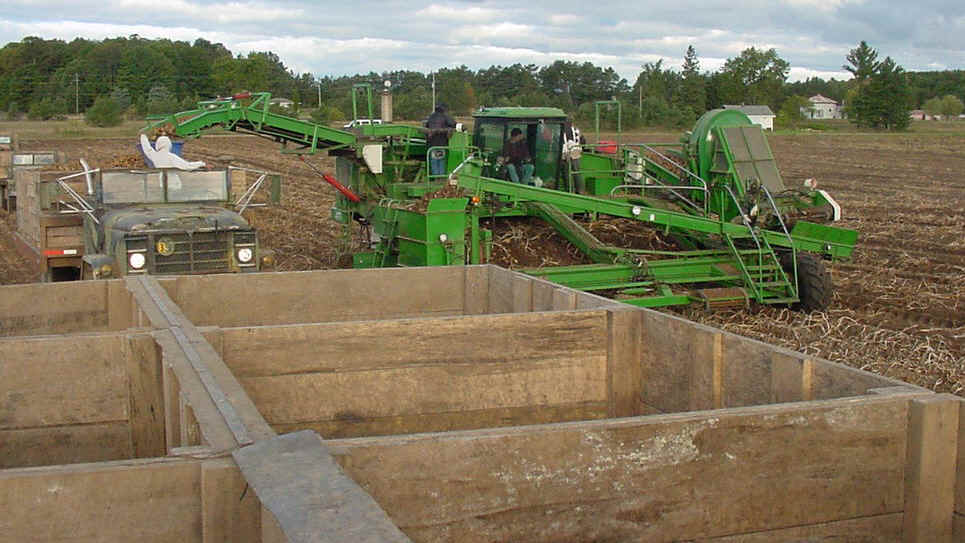
Source:
Photograph by Randy Schaetzl, Professor of Geography - Michigan State University
Note below how the vines (with the tubers attached) are being conveyed up, into the
harvester.

Source:
Photograph by Randy Schaetzl, Professor of Geography - Michigan State University
Men on the harvester sort through the potatoes as they pass by on conveyor belts.
They are looking for vines and "unacceptable" potatoes. Note the
Mexican flag flying proudly.
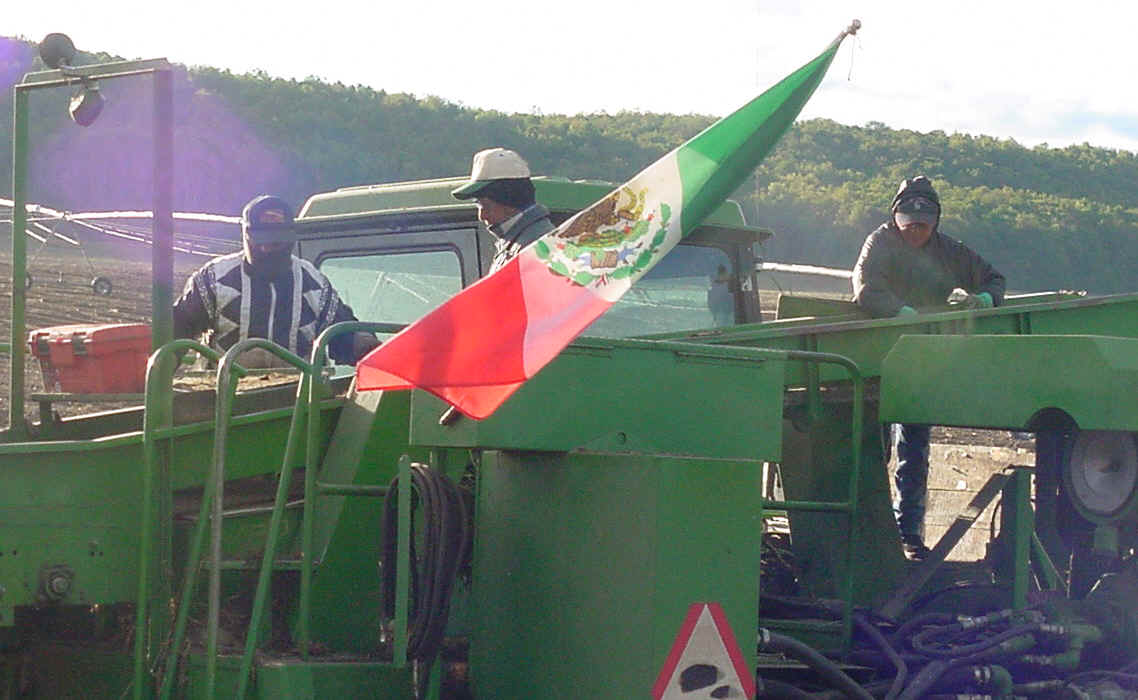
Source: Photograph by Randy Schaetzl, Professor of Geography - Michigan State University
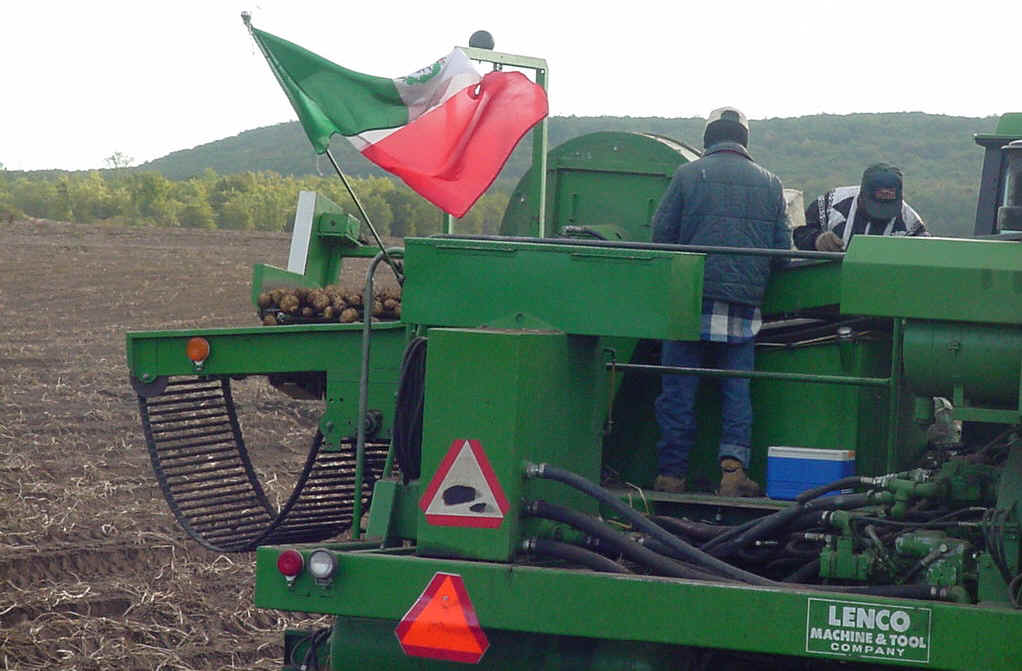
Source:
Photograph by Randy Schaetzl, Professor of Geography - Michigan State University
Like many of Michigan's crops, seasonal or migrant workers are imperative to the success
of the industry.
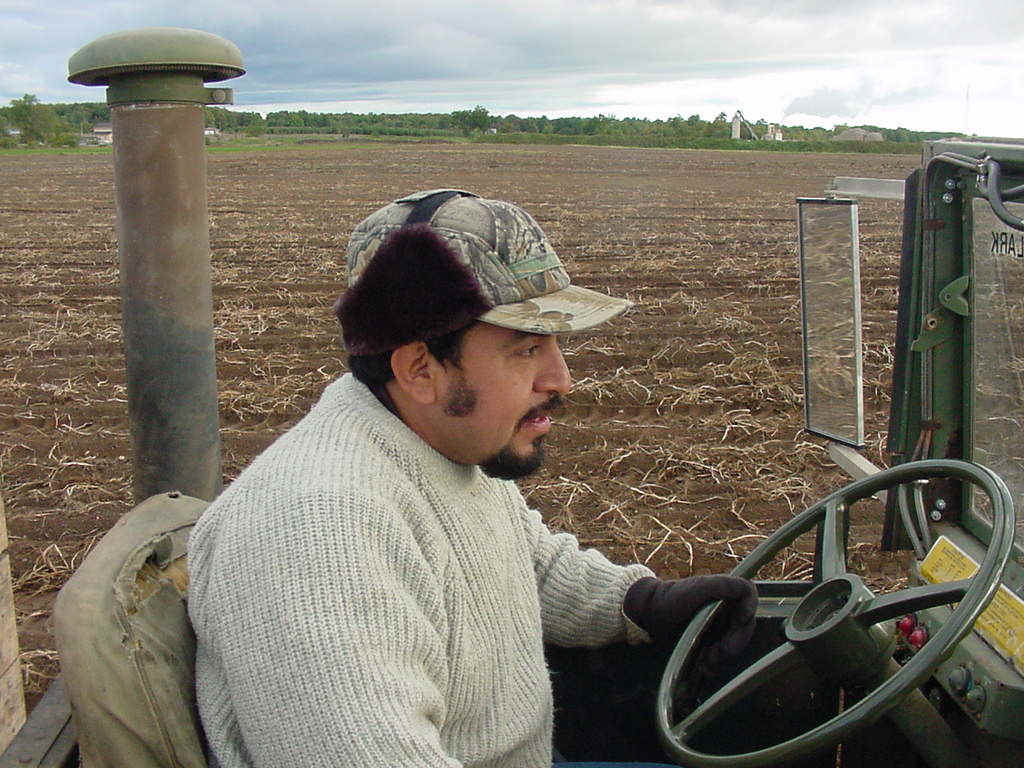
Source:
Photograph by Randy Schaetzl, Professor of Geography - Michigan State University
Potatoes can be harvested at an amazing rate. Very quickly a large truck full of
spuds can be off to the storage shed!
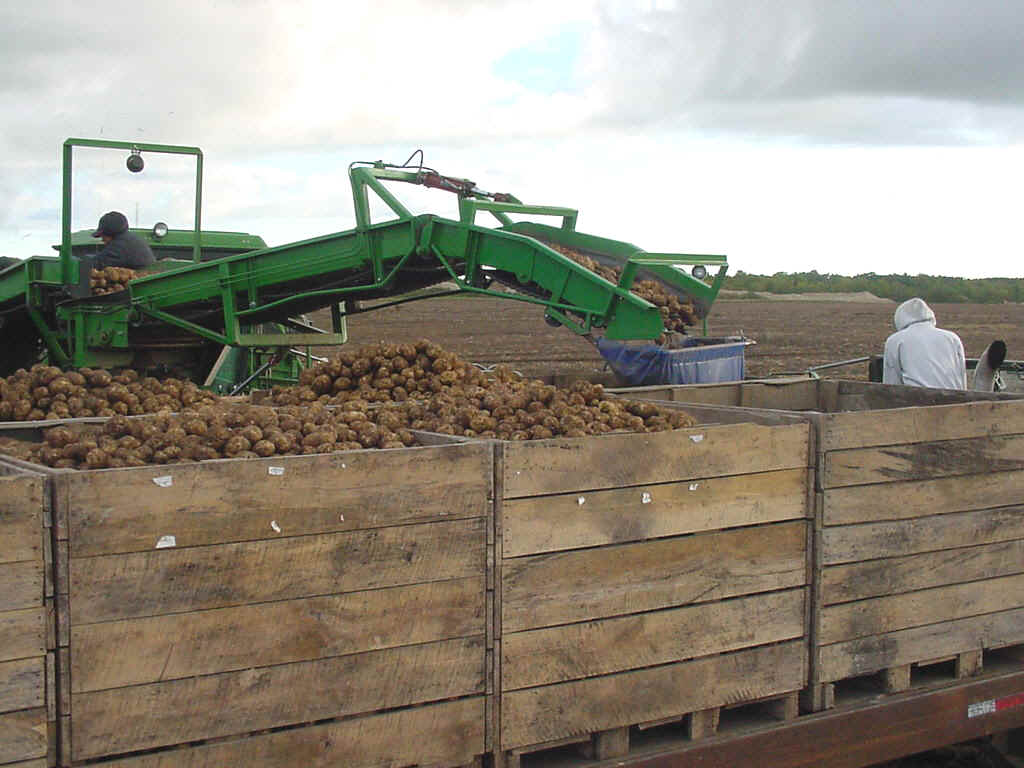
Source:
Photograph by Randy Schaetzl, Professor of Geography - Michigan State University

Source: Photograph by Randy Schaetzl, Professor of Geography - Michigan State University

Source:
Photograph by Randy Schaetzl, Professor of Geography - Michigan State University
After harvesting, potatoes must be trucked to a storage facility, where they are stored in
a cool, moisture-controlled environment, such as this potato barn in Alpena County.
Mounding soil alongside the walls of the barn keeps the inside temperature more constant.
Source: Photograph by Randy Schaetzl, Professor of Geography - Michigan State University
Before potatoes can be sold or shipped they must be sorted for quality. This process of separating different qualities of potatoes is called grading and special implements have been created to grade potatoes before packaging.
Rocks
Modern potato harvesters are able to sort rocks from potatoes with amazing success.
They do this with air. A huge fan within the harvester blows across (actually,
under) the potatoes and rocks. The potaoes, being lighter per unit volume than
rocks, "float" upwards and move into a different part of the machine. The
rocks settle out and are stored in another compartment, to be later dropped onto the
field. The image below shows the rock "bin" in its overfull state.
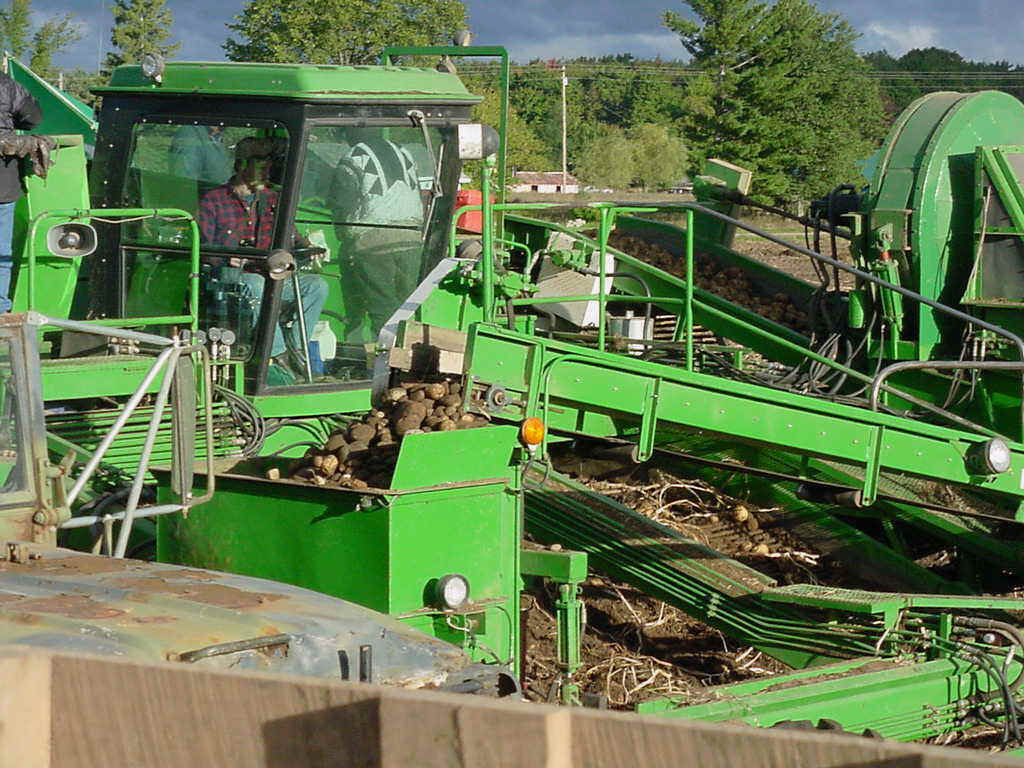
Source:
Photograph by Randy Schaetzl, Professor of Geography - Michigan State University
Below, a pile of rocks lays in the field, waiting for the farmer to pick it up and take it
to another place. Rest assured, more rocks will be unearthed by next year's harvest!

Source: Photograph by Randy Schaetzl, Professor of Geography - Michigan State University
Most of the images above were taken at Kitchen Farms, a large potato operation near Mancelona. Kitchen Farms sells many of their potatoes to Meijer; look for their products and support Michigan farmers!
This material has been compiled for educational use only, and may not be reproduced without permission. One copy may be printed for personal use. Please contact Randall Schaetzl (soils@msu.edu) for more information or permissions.